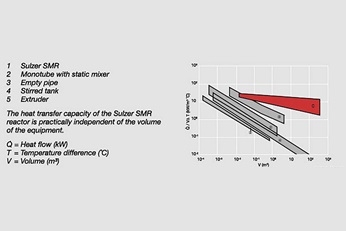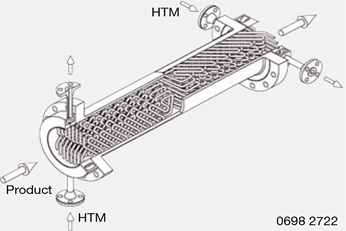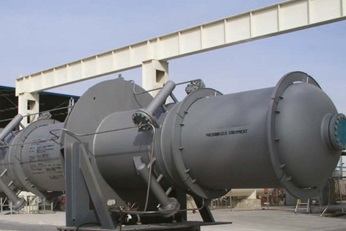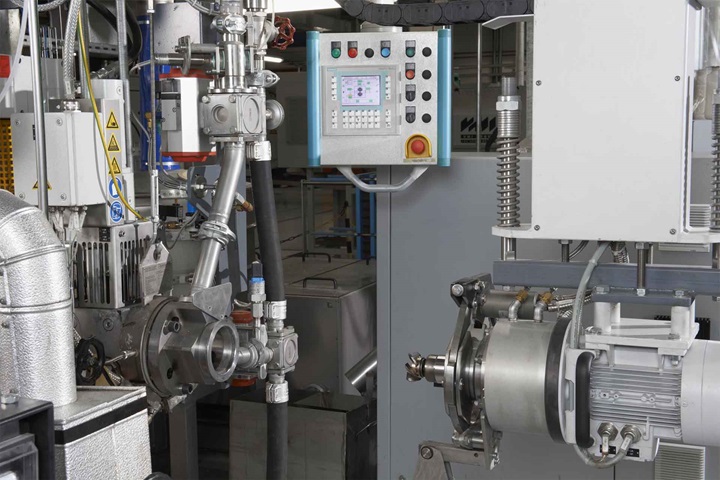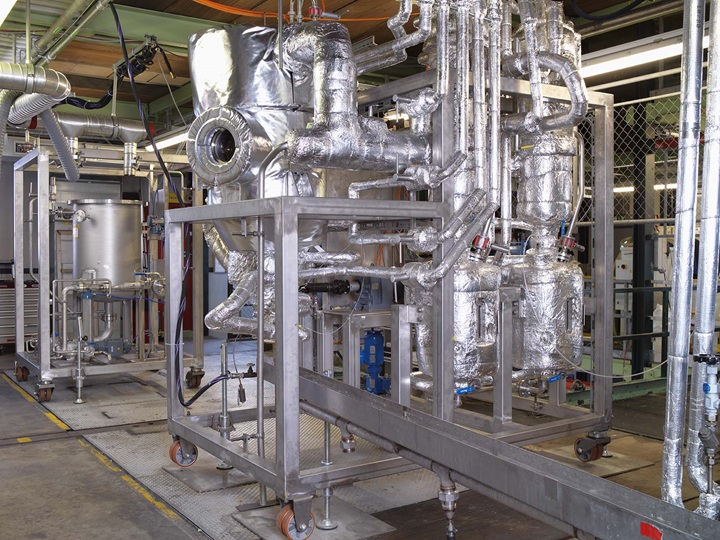- High and controllable heat transfer rates
- High conversion and reduction of by-products
- No inert system or solvents required
- Consistently uniform product quality through excellent control of temperature-time history
- Excellent plug flow behavior and thus narrow residence time distributions
- Combination of mixing and efficient heat removal, thereby maintaining high driving forces for reaction
- Suppression of side reactions
- No dead zones, thus facilitating a fast transition of products and process conditions
- Inherently safe design
- No rotating parts, thus minimized maintenance costs
- Low energy consumption, therefore overall low operating costs
- Control of the residence time distribution with a minimum reactor volume required
Polymer reaction technology
Game-changing mixer reactor technology
- Heat removal and temperature control for polymerization
- Polymer production
- Chemical industry
- Petrochemical industry
- Fiber industry
Technology components
The Sulzer Mixer Reactor (SMR) is a development based on many years of testing and experience with smaller mixers used in a variety of viscous applications. This industrially proven design has recently been upgraded to the new SMR plus, which exhibits even better plug flow behavior.
The unique tube layout in each tube bundle is similar to that of a static mixer geometry, and induces a radial product flow on the shell side that suppresses the formation of laminar layers in viscous streams. This effect enhances the heat transfer to and from the polymer melt and combines well with the extraordinarily high surface area per unit volume, making the SMR plus one of the highest performing reactors / heat exchangers in the industry.
The multitube mixer heat exchanger type SMXL is used mainly for heating and partly for cooling applications especially for heat-sensitive and/or viscous products. A special application is preheating of a polymer solution, where part of the product starts to evaporate already in the heat exchanger, for example prior to entering the devolatilization vessel.
Typical SMR™ post-reactor configuration
1 & 2 – Monomer / catalyst feed
3 & 4 – Additive feed ports
5 – Heat transfer fluid connections
I – Monomer / additive mixers
II & III – Polymerization reactor
IV – Post-polymerization SMR™
Loop / plug flow reactor
Individual SMR reactors can be put into series to form a loop reactor and are used especially for highly exothermal reactions.Features
- The excellent mixing characteristics of the Sulzer SMR and SMR plus equipment ensure optimum homogenization of local concentration and optimally reduced temperature gradients over the cross-section of the reactor
- Thanks to its densely packed heat exchange surface area, the SMR provides reliable heat removal and temperature control of bulk polymerization reactions
- With the increased flow rate of the loop concept, even highly exothermal polymerization reactions can be handled safely
- The recirculation ratio of the loop reactor can be adjusted to individual process requirements and can reach CSTR (cascade reactor) characteristics in the loop reactor
Advantages
- High and controllable heat transfer rates
- High conversion and reduction of by-products
- No inert system or solvents required
- Consistently uniform product quality through excellent control of temperature-time history
- Excellent plug flow behavior and thus narrow residence time distributions
- Combination of mixing and efficient heat removal, thereby maintaining high driving forces for reaction
- Suppression of side reactions
- No dead zones, thus facilitating a fast transition of products and process conditions
- Inherently safe design
- No rotating parts, thus minimized maintenance costs
- Low energy consumption, therefore overall low operating costs
Contact our Polymer team below

